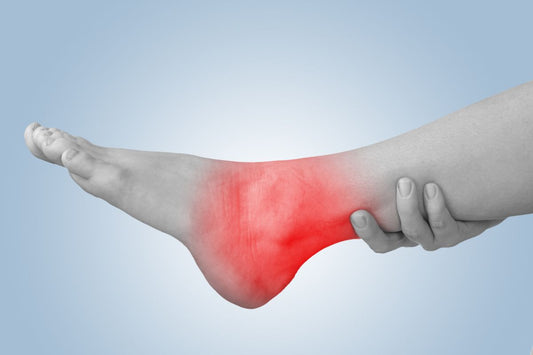A sprained ankle might seem like a minor setback, but without proper care, it can linger and lead to long-term issues like chronic instability or repeat injuries. While rest and time are essential, medical devices can dramatically improve healing, reduce pain, and support your ankle during every stage of recovery. Here’s what you need to know.
Understanding Sprained Ankles
An ankle sprain occurs when the ligaments that stabilize your ankle joint are stretched or torn — usually after twisting or rolling your foot awkwardly. The most common type affects the lateral ligaments on the outside of the ankle.
Sprains are classified into three grades:
- Grade I (Mild): Slight stretch or microscopic tear of the ligament. Mild swelling and discomfort.
- Grade II (Moderate): Partial ligament tear. More swelling, bruising, and pain. Walking may be difficult.
- Grade III (Severe): Complete ligament tear. Significant swelling, instability, and inability to bear weight.
Regardless of severity, appropriate medical support can shorten recovery and reduce complications.
Essential Medical Devices for Sprained Ankles

1. Ankle Braces and Ankle Supports
Ankle braces are one of the most commonly recommended devices. They stabilize the joint and limit harmful movement without completely restricting mobility.
- Lace-Up Braces: Offer customizable compression and support — ideal for moderate sprains.
- Stirrup Braces (Rigid): Prevent excessive side-to-side motion, useful for moderate to severe sprains.
- Elastic or Wraparound Braces: Great for mild sprains, swelling reduction, and support during light activity.
These braces can also help prevent re-injury, especially if you return to sports or movement too soon.
2. Compression Sleeves
Compression helps control swelling and promotes circulation — two essential components of recovery. Compression sleeves are comfortable, easy to wear inside shoes, and useful in the early days following injury and throughout physical therapy.
Look for breathable, moisture-wicking materials to avoid skin irritation.
3. Cold Therapy Devices
While an ice pack works in a pinch, modern cold therapy devices provide longer, more consistent relief from inflammation and pain.
- Reusable Gel Packs: Convenient and effective for targeting swelling, works similar to an ice pack.
- Circulating Cold Therapy Units: Used in clinics and at home for serious injuries. These machines pump cold water through a wrap, providing continuous cold therapy.
Use cold therapy in 20-minute intervals, especially during the first 48-72 hours post-injury.

4. Walking Boots and Air Casts
For more severe sprains (Grade II or III), your doctor might recommend a walking boot (CAM boot) or air cast.
- Walking Boots: Immobilize the ankle and allow weight-bearing with protection.
- Air Casts: Provide a blend of support and mobility, often used in the transition between a boot and brace.
These devices ensure the ankle heals properly while reducing strain on healing ligaments.
5. Crutches or Knee Scooters
If weight-bearing causes pain or further aggravates the sprain, crutches or a knee scooter can help you stay mobile without stressing the injury.
- Crutches: Ideal for short-term use.
- Knee Scooters: More comfortable and stable for longer recovery periods or individuals with balance issues.
How to Choose the Right Device
Selecting the most suitable sprained ankle medical devices isn’t one-size-fits-all. It depends heavily on the severity of your injury, your daily activity level, and which stage of recovery you’re in. Matching the right support to the right time in your healing process ensures you reduce pain, prevent complications, and get back on your feet faster.
Early Stage (0–72 Hours)
Immediately after the injury, the goal is to minimize swelling and prevent further strain. This is where compression wraps, cold therapy devices, and temporary offloading tools like crutches come in. They help stabilize the joint and reduce inflammation. For mild to moderate sprains, an adjustable ankle brace with compression support may also be worn during rest.
Mid Stage (4–14 Days)
As swelling subsides and healing begins, you’ll want to transition to structured support that allows for limited movement while still protecting the ligament. This is the ideal time to use a lace-up ankle brace, air cast, or stirrup brace, which can keep the ankle aligned during light walking or rehabilitation exercises. These sprained ankle medical devices not only offer continued compression but also reinforce stability during weight-bearing.
Later Stage (2+ Weeks and Beyond)
Once your pain decreases and movement improves, it’s time to focus on gradual reintegration into activity. Lightweight supports like elastic compression sleeves or soft ankle braces are helpful for high-movement tasks such as walking, working out, or sports. They reduce the risk of re-injury by providing just enough external support without over-reliance.
Regardless of the stage, we recommend consulting a healthcare professional to ensure you’re using the right device at the right time — especially if your injury is moderate or severe.
Final Thoughts
A sprained ankle isn’t just “a simple twist” — it’s a real injury that can significantly affect your daily life if not properly addressed. The good news? With the right approach and supportive tools, recovery doesn’t have to be uncertain or prolonged. Today’s range of medical devices for ankle sprains — from compression wraps and ankle braces to walking boots and cold therapy systems — offers practical solutions for every stage of healing.
Each device serves a purpose, whether it's minimizing inflammation in the early hours or providing stability during your return to physical activity. Choosing the right support at the right time can reduce complications, promote faster healing, and help prevent reinjury down the road.
While this guide offers general recommendations, it's important to remember that every injury is unique. For the best outcomes, always speak with a qualified healthcare professional to ensure your recovery plan — and the devices you use — are right for your specific condition.
Taking recovery seriously from the start means fewer setbacks, better long-term mobility, and a safer return to the activities you enjoy.




